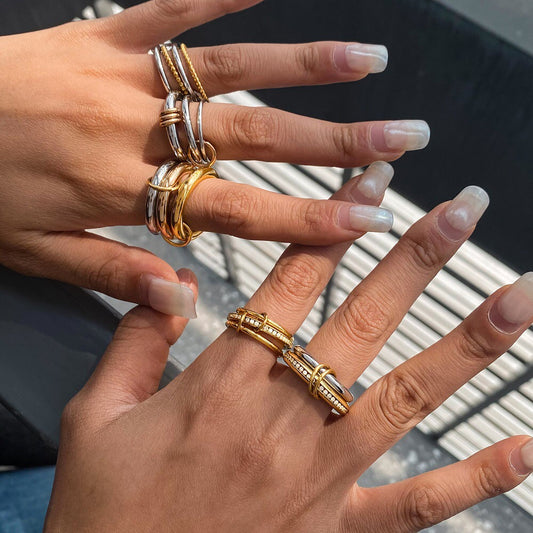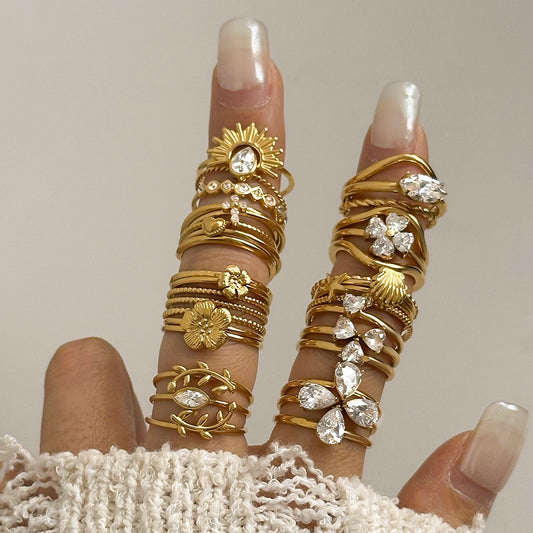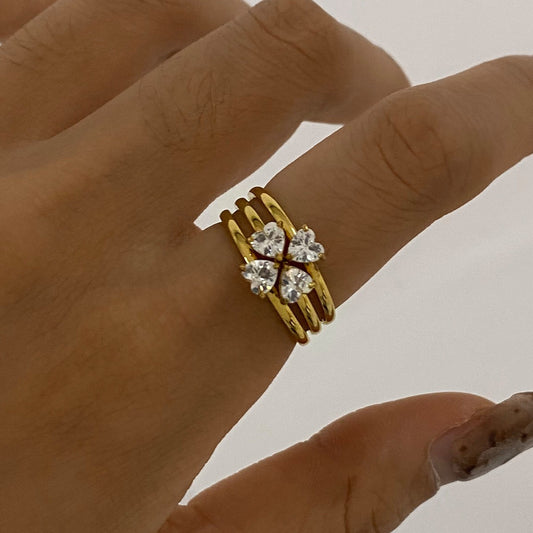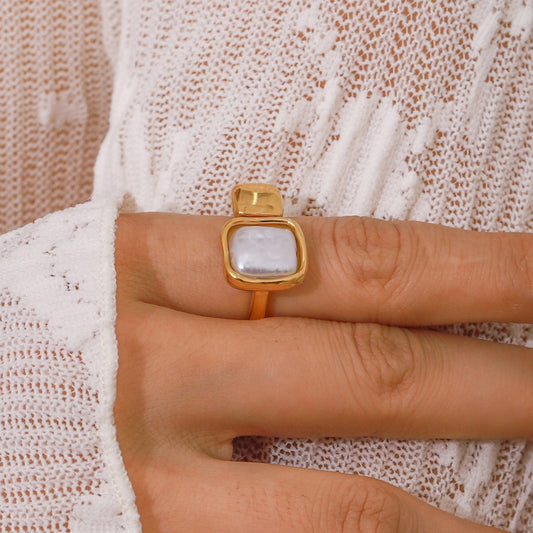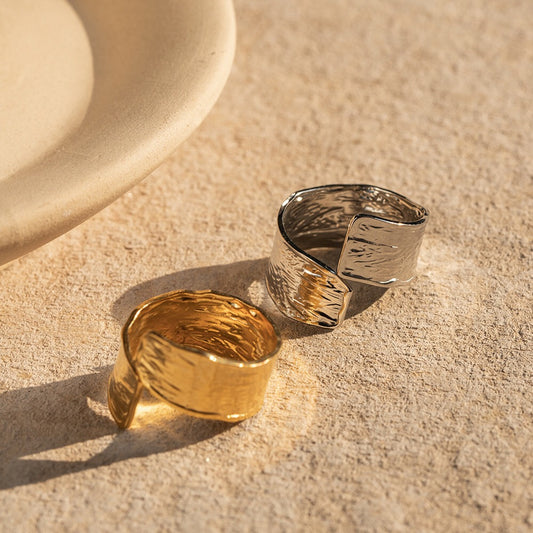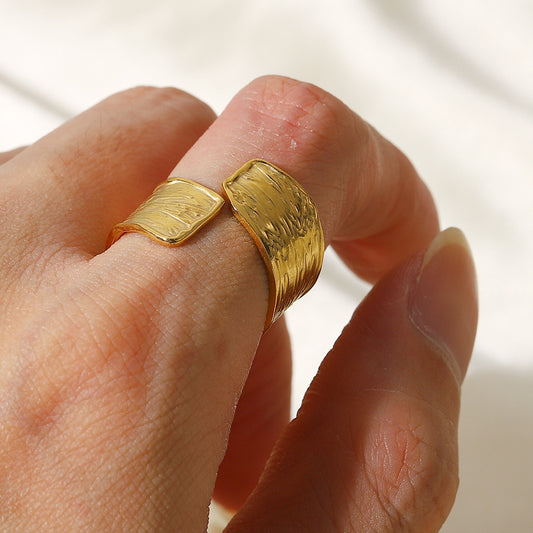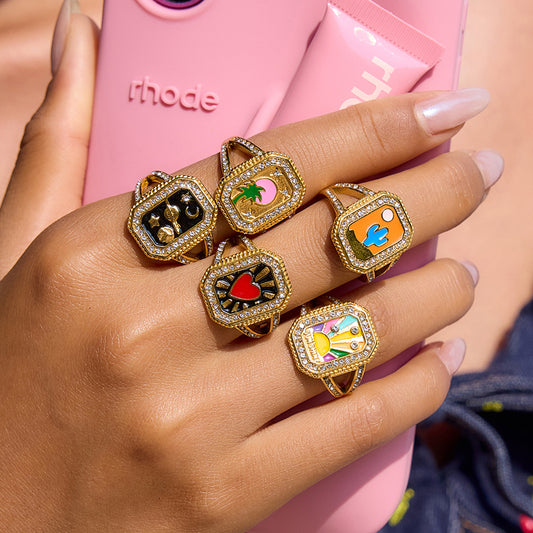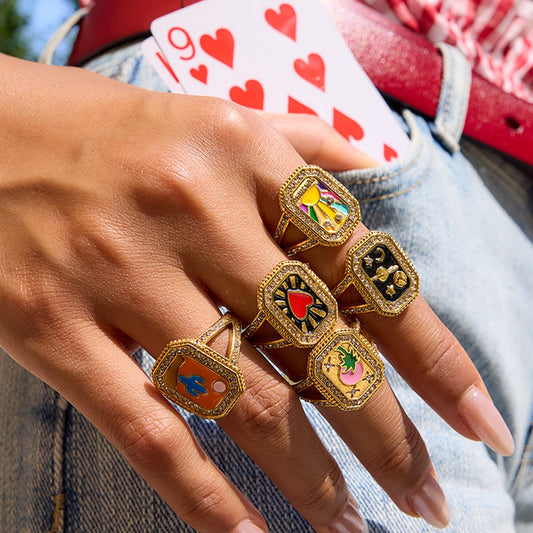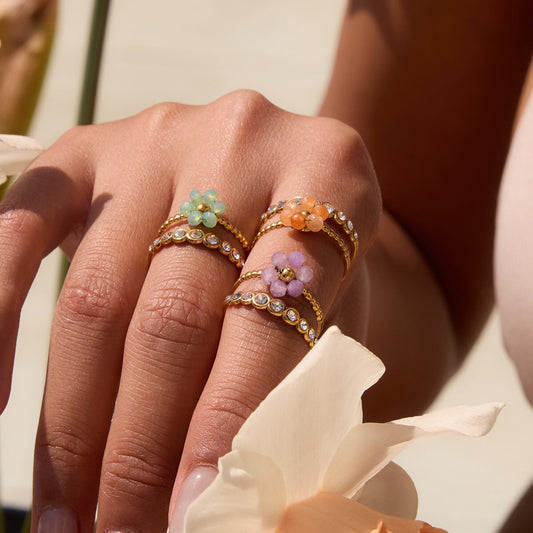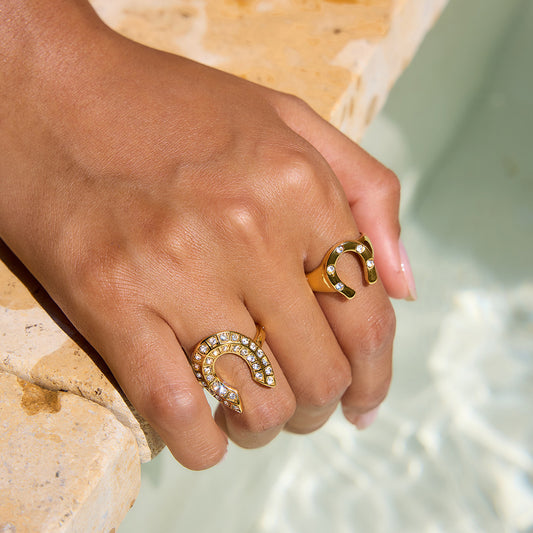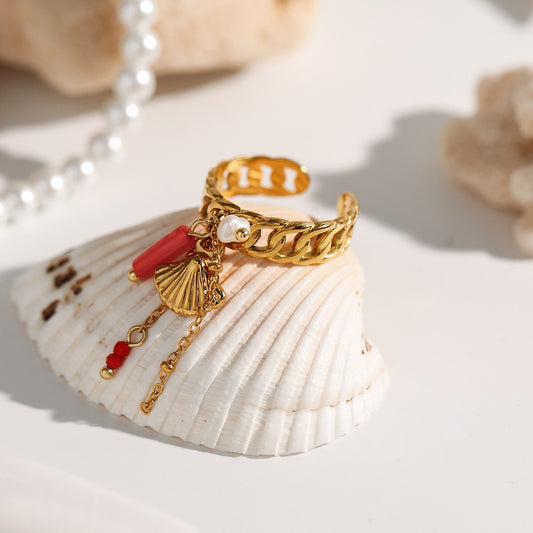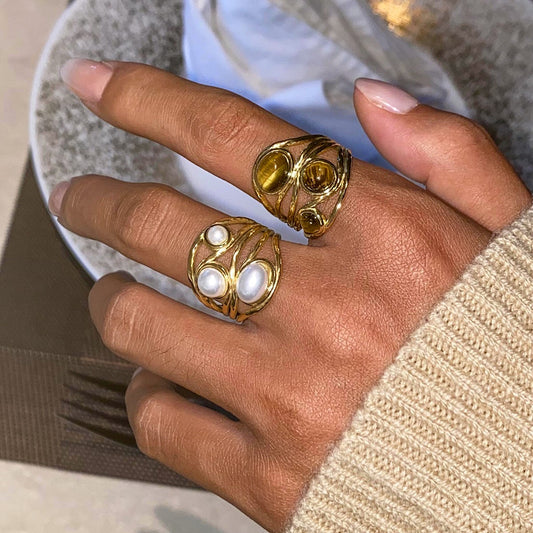Yellow diamond rings aren’t just a piece of jewelry—it’s a burst of sunshine on your finger. With their vivid golden hues (ranging from soft lemon to rich amber), yellow diamonds have captivated collectors and style lovers for centuries, symbolizing joy, warmth, and uniqueness. The global diamond jewelry market size was estimated at USD 340.6 billion in 2022 and is projected to reach USD 482.2 billion by 2030. Unlike white diamonds (which rely on sparkle alone), yellow diamonds stand out for their natural color—a rare trait caused by nitrogen impurities in the stone’s formation. Whether you’re drawn to a delicate yellow diamond solitaire or a bold statement ring, a yellow diamond piece carries an air of exclusivity and positivity that’s hard to match. It’s the perfect choice for anyone who wants their jewelry to tell a story of joy, individuality, and timeless elegance.

What Are Yellow Diamond Rings?
Yellow diamond rings feature yellow diamonds—natural diamonds that derive their color from nitrogen atoms trapped during their formation (the more nitrogen, the deeper the yellow hue). These diamonds are part of the "fancy colored diamond" family, distinct from white diamonds (which are graded for lack of color). To understand their allure, let’s break down their key traits and why they’re so special.
Core Traits of Yellow Diamond Rings
Yellow diamond rings owe their prestige to four unique qualities:
-
Rarity: Only 1 in 10,000 diamonds mined is a fancy colored diamond—and yellow diamonds, while more common than red or blue diamonds, are still exceptionally rare. This scarcity makes yellow diamond rings a valuable investment and a conversation starter.
-
Natural Color: Unlike dyed or treated gemstones, yellow diamonds’ color is entirely natural. Their hue ranges from "fancy light yellow" (soft lemon) to "fancy vivid yellow" (deep, saturated amber)—the latter being the most sought-after (and expensive) grade.
-
Warmth & Versatility: Yellow diamonds’ sunny hue complements every skin tone. For warm skin tones (yellow/peach undertones), it enhances natural glow; for cool skin tones (pink/blue undertones), it adds a balancing warmth. It also pairs beautifully with metals like yellow gold (for monochromatic richness), white gold (for contrast), and rose gold (for romance).
-
Symbolism: Yellow diamonds are linked to joy, optimism, and prosperity. They’re a popular choice for celebrations—engagements, anniversaries, promotions—since they carry the energy of happy moments.

How Yellow Diamond Rings Differ from White Diamond Rings
Yellow diamonds stand apart from traditional white diamonds in key ways:
-
Color vs. Clarity: White diamonds are graded for lack of color and clarity; yellow diamonds are graded for their color intensity (the deeper the yellow, the higher the value) and clarity takes a backseat (minor inclusions are acceptable if they don’t dull the color).
-
Sparkle vs. Hue: White diamonds rely on brilliance (sparkle) to shine; yellow diamonds glow with both sparkle and their inherent color. A yellow diamond’s beauty lies in how its hue catches light, not just how it reflects it.
-
Personality: White diamonds are classic but understated; yellow diamonds are bold and expressive. A yellow diamond ring says "I’m not afraid to stand out"—perfect for anyone who loves unique, eye-catching jewelry.
Why Choose Yellow Diamond Rings?
Yellow diamond rings resonate with wearers for three powerful reasons: their rare beauty, their ability to elevate any moment, and their symbolic ties to joy and individuality.
Rare Beauty That Turns Heads
Yellow diamonds’ scarcity makes them a status symbol—but their appeal goes beyond exclusivity. Their warm, golden hue is instantly recognizable and universally flattering. Unlike trends that fade, a yellow diamond’s color is timeless: a yellow diamond ring worn in 2024 will look just as stunning in 2054, while a trendy white diamond design may feel dated. A 2024 survey of jewelry lovers found that 87% of those who own yellow diamond pieces said their ring "gets compliments every time I wear it"—a testament to its eye-catching charm.

Versatility for Every Occasion
Yellow diamond rings adapt to any look or moment, making them far more wearable than you might think:
-
Everyday Wear: A small yellow diamond solitaire (0.30–0.50ct) in a thin yellow gold band adds a subtle pop of color to jeans and a t-shirt or a work outfit.
-
Special Events: A large yellow diamond statement ring (1ct+) in a halo setting (surrounded by white diamonds) elevates a cocktail dress or wedding gown, making it the focal point of your look.
-
Milestones: Yellow diamonds are the perfect choice for meaningful moments—they’re the 10th wedding anniversary gem (symbolizing a decade of joy) and a popular engagement ring option for couples who want a non-traditional but still romantic choice.
Symbolism of Joy & Individuality
In a world of white diamond engagement rings, a yellow diamond stands out as a symbol of individuality. It says you value uniqueness over tradition—and that you want your jewelry to reflect your personality. Yellow diamonds also carry emotional weight: they’re often given to mark happy moments (a new job, a child’s birth, a milestone anniversary) because their color evokes sunshine and positivity. Wearing a yellow diamond ring is a daily reminder to embrace joy and celebrate life’s little (and big) wins.
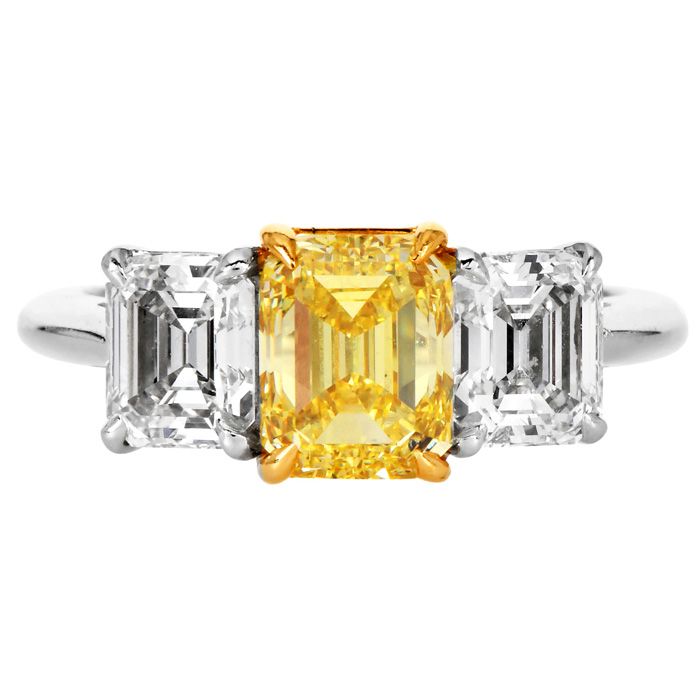
Popular Styles of Yellow Diamond Rings
Yellow diamonds shine in a range of designs, from minimalist to dramatic. Here are the most beloved styles to suit every taste:
1. Yellow Diamond Solitaire Ring (Minimalist Luxury)
The most timeless style—letting the yellow diamond’s hue take center stage:
-
Design: A single yellow diamond (round, oval, or cushion-cut) in a simple prong setting (4 or 6 prongs) in yellow gold, white gold, or platinum. Stone sizes: 0.30–1ct (small enough for everyday wear, large enough to showcase color).
-
Best For: Minimalists, anyone new to yellow diamonds, or those who want the diamond’s color to be the star. Yellow gold settings enhance the diamond’s warmth; white gold/platinum creates a striking contrast.
-
Why It Works: It’s the "less is more" approach to luxury—no extra details to distract from the diamond’s sunny hue. A yellow diamond solitaire is versatile enough for the office, coffee runs, and date nights.
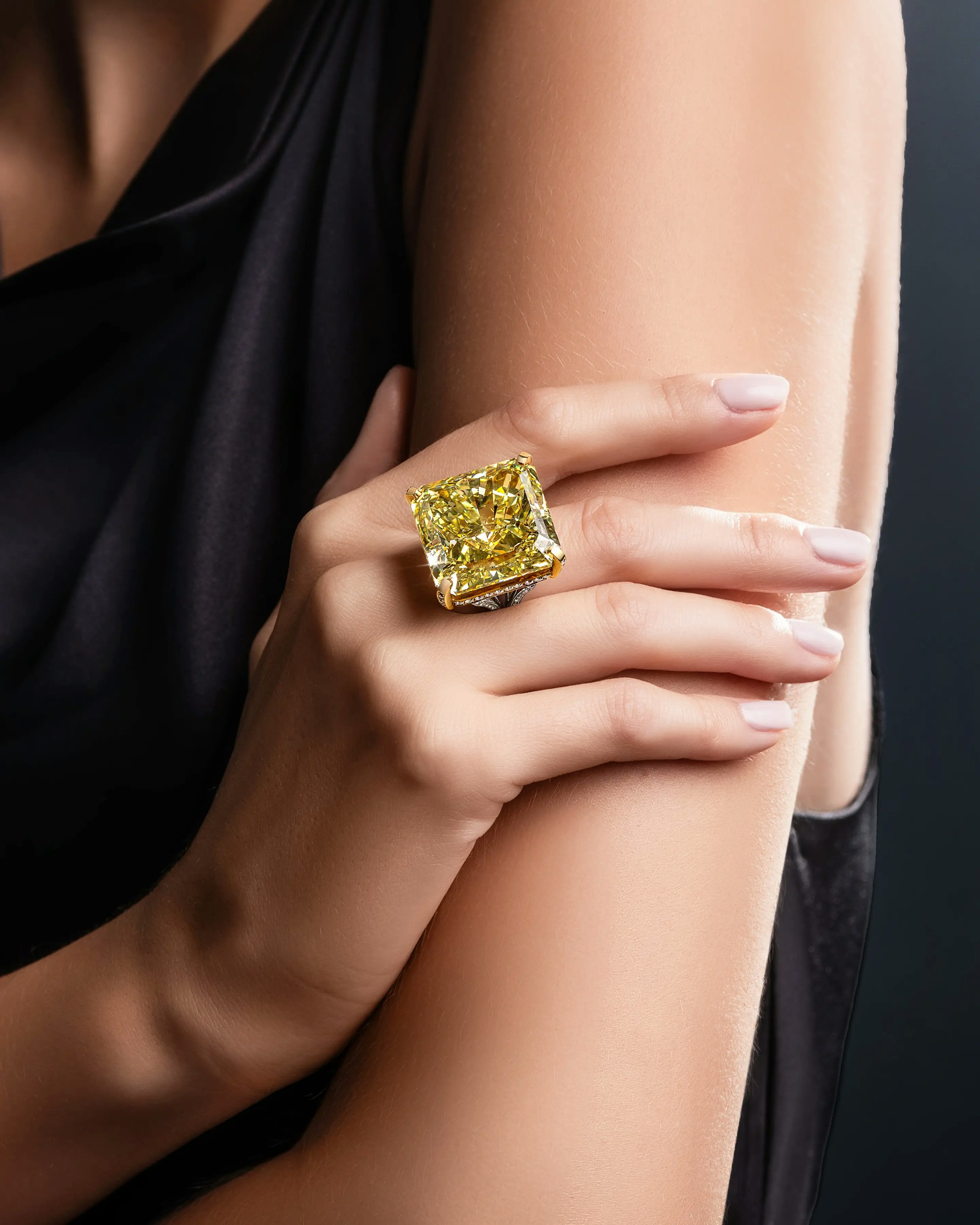
2. Yellow Diamond Halo Ring (Glamorous Sparkle)
For maximum impact—ideal for engagement rings or special occasions:
-
Design: A center yellow diamond surrounded by a "halo" of tiny white diamonds (or smaller yellow diamonds) in a white gold or yellow gold setting. The halo makes the center diamond look larger and adds extra sparkle.
-
Best For: Brides-to-be, lovers of glamorous jewelry, or anyone who wants a ring that feels "special." A fancy vivid yellow diamond in a white diamond halo is especially striking— the contrast between yellow and white makes the hue pop.
-
Why It Works: The halo amplifies the yellow diamond’s beauty without overpowering it. It’s perfect for weddings or parties, where the ring will catch light and turn heads.
3. Yellow Diamond Statement Ring (Bold & Expressive)
For those who love to make a style statement:
-
Design: A large yellow diamond (1ct+) in an ornate setting—think a three-stone ring (yellow diamond flanked by white diamonds or sapphires), a cocktail ring with a cushion-cut yellow diamond, or a vintage-inspired design with filigree metalwork.
-
Best For: Fashion-forward wearers, special events (galas, weddings), or anyone who wants their ring to be a conversation starter. Statement rings often use fancy intense or vivid yellow diamonds for maximum color impact.
-
Why It Works: A bold yellow diamond statement ring is unapologetically glamorous. It’s the perfect accessory for someone who loves to stand out and isn’t afraid to embrace color.
4. Yellow Diamond Stackable Band (Subtle Color)
For a more understated take on yellow diamonds:
-
Design: A thin band (1–2mm wide) with tiny yellow diamond chips or a single small yellow diamond (2–3mm) in yellow gold or rose gold. It’s designed to be stacked with other bands (plain metal, white diamond) for a customized look.
-
Best For: Minimalists who want a touch of color, everyday wear, or anyone who wants to dip their toes into yellow diamond jewelry without investing in a large stone.
-
Why It Works: Stackable yellow diamond bands add a subtle pop of warmth to your stack. They’re lightweight, comfortable, and easy to mix with other jewelry—perfect for someone who loves layered looks.
5. Yellow Diamond Vintage-Inspired Ring (Old-World Charm)
For lovers of retro style and heirloom vibes:
-
Design: A yellow diamond (often cushion-cut or emerald-cut) in a vintage setting—think Art Deco geometric patterns, Mid-Century modern curves, or Edwardian filigree. Metals: Yellow gold (for authenticity) or rose gold (for a romantic twist).
-
Best For: Vintage enthusiasts, anyone who loves jewelry with "character," or those who want a ring that feels like a family heirloom (even if it’s new).
-
Why It Works: Yellow diamonds were popular in vintage jewelry (especially the 1920s and 1950s), so a vintage-inspired ring feels nostalgic yet fresh. The combination of old-world design and sunny color creates a timeless look.
How to Choose the Perfect Yellow Diamond Ring
Selecting a yellow diamond ring requires focusing on color (the most important factor) and aligning it with your style and budget. Follow these steps to find your ideal piece:
Step 1: Prioritize Color Intensity (The Most Critical Factor)
Yellow diamonds are graded by color intensity, from light to vivid. Here’s what to know:
-
Fancy Light Yellow: Soft, pale lemon hue—affordable and perfect for everyday wear.
-
Fancy Yellow: Rich, medium golden hue—the most popular grade (balances color and price).
-
Fancy Intense Yellow: Deep, saturated gold hue—rare and more expensive, with noticeable warmth.
-
Fancy Vivid Yellow: The most valuable grade—bright, bold amber hue that catches light beautifully.
For everyday rings, fancy light or fancy yellow is ideal. For special occasions or engagement rings, opt for fancy intense or vivid if your budget allows.
Step 2: Choose the Right Cut
A well-cut yellow diamond enhances its color and sparkle. The best cuts for yellow diamonds are:
-
Cushion-Cut: Soft, rounded corners that maximize color—perfect for showing off a yellow diamond’s warmth.
-
Oval-Cut: Elongated shape that makes the diamond look larger and spreads color evenly across the stone.
-
Radiant-Cut: Square shape with trimmed corners that balances sparkle and color—great for modern styles.
Avoid overly deep or shallow cuts—they can make the yellow diamond look dull or washed out.
Step 3: Pick a Metal That Complements the Diamond
The metal setting should enhance the yellow diamond’s hue:
-
Yellow Gold: Creates a monochromatic, luxurious look—ideal for fancy yellow or intense yellow diamonds. It amplifies the diamond’s warmth and feels classic.
-
White Gold/Platinum: Creates a striking contrast—white metal makes the yellow diamond’s hue pop. Perfect for fancy vivid yellow diamonds or anyone who loves a modern, bold look.
-
Rose Gold: Adds a romantic twist—rose gold’s pink undertones complement yellow diamonds, creating a soft, feminine look. Great for vintage-inspired or stackable rings.
Step 4: Consider Your Lifestyle
Your daily routine will guide the ring’s design:
-
Active Lifestyles (Gym, Cooking, Hiking): Choose a bezel-set yellow diamond (no prongs to catch) in a thick band (2–3mm) for durability. Avoid large statement rings or pavé details that can trap dirt.
-
Office Jobs: A small solitaire or stackable band works perfectly—subtle enough for professional settings but still adds color.
-
Special Occasions: A halo or statement ring is ideal—these designs are meant to shine at parties, weddings, or milestones.
Step 5: Set a Realistic Budget
Yellow diamond rings range in price from \(1,500 to \)50,000+, depending on color intensity, carat weight, and metal. Here’s how to allocate:
-
Budget \(1,500–\)5,000: Fancy light yellow diamond (0.30–0.50ct) in 14k yellow gold or white gold (solitaire or stackable band).
-
Budget \(5,000–\)15,000: Fancy yellow or intense yellow diamond (0.75–1ct) in 14k or 18k gold (solitaire or halo setting).
-
Budget $15,000+: Fancy vivid yellow diamond (1ct+) in 18k gold or platinum (halo, three-stone, or statement design).
Money-Saving Tip: Opt for a slightly smaller carat weight with a higher color intensity. A 0.75ct fancy intense yellow diamond will look more vibrant (and get more compliments) than a 1ct fancy light yellow diamond—at a similar price.
How to Care for Yellow Diamond Rings
Yellow diamonds are durable (10 on the Mohs scale, same as white diamonds), but proper care will keep your ring looking its best for decades:
Daily Care Tips
-
Remove Before Activities: Take off the ring before swimming (chlorine can damage metal), showering (soap builds up on the diamond), working out (sweat can tarnish metal), or doing chores (cleaning products scratch metal).
-
Wipe After Wear: Gently wipe the diamond and band with a soft microfiber cloth to remove oil, lotion, or dirt—this keeps the diamond’s color bright and the metal shiny.
-
Avoid Harsh Chemicals: Keep the ring away from perfume, hairspray, and nail polish remover—these can dull the metal or leave a film on the diamond.
Weekly Deep Cleaning
-
Mix warm water with a drop of mild dish soap (or diamond-specific cleaner) in a small bowl.
-
Soak the ring for 10–15 minutes—this loosens dirt from the diamond’s setting and the band.
-
Gently scrub the diamond and setting with a soft-bristled toothbrush (focus on the back of the diamond, where dirt often hides).
-
Rinse under warm running water and pat dry with a microfiber cloth—never air-dry, as water spots can form.
-
For extra shine: Polish the metal band with a metal-specific cloth (yellow gold cloth for yellow gold, white gold cloth for white gold).
Annual Maintenance
-
Professional Cleaning: Take the ring to a jeweler once a year for a deep clean—they’ll use ultrasonic tools to remove dirt you can’t reach at home and polish the metal to restore its shine.
-
Prong Check: If your ring has a prong setting, ask the jeweler to inspect the prongs—loose prongs can cause the diamond to fall out. Tightening them regularly is essential.
-
Appraisal: For high-value yellow diamond rings, get an annual appraisal to update its value (yellow diamonds often appreciate over time, making them a smart investment).
Frequently Asked Questions About Yellow Diamond Rings
Q1: Are yellow diamonds "real" diamonds?
A: Yes! Yellow diamonds are 100% natural diamonds—they form in the earth just like white diamonds, but with nitrogen impurities that give them their color. They’re not "fake" or treated (unless specified as such—always buy from a reputable jeweler to ensure authenticity).
Q2: Do yellow diamonds fade over time?
A: No—yellow diamonds’ color is entirely natural and stable. They won’t fade with normal wear, even if exposed to sunlight or heat (unlike some colored gemstones, like amethyst). With proper care, your yellow diamond’s hue will stay bright forever.
Q3: Can yellow diamond rings be resized?
A: Yes—most yellow diamond rings can be resized by a skilled jeweler. Plain bands or solitaire settings are easiest to resize; halo or three-stone rings may require more work (jewelers may need to adjust the setting to keep the diamond secure). Always choose a jeweler with experience working with colored diamonds.
Q4: Are yellow diamond rings a good investment?
A: Yes—yellow diamonds are a great investment, especially fancy intense or vivid grades. Their rarity means their value often increases over time (white diamonds’ value is more volatile). A high-quality yellow diamond ring bought today may be worth significantly more in 10–20 years.
Q5: Can I wear a yellow diamond ring with other jewelry?
A: Absolutely! Yellow diamonds pair beautifully with other metals and gemstones:
-
Yellow Gold Jewelry: Create a monochromatic look by pairing a yellow diamond ring with a yellow gold necklace or earrings.
-
White Gold/Silver Jewelry: The contrast between yellow and white adds a modern, layered vibe—try a yellow diamond solitaire with a white diamond stackable band.
-
Colored Gemstones: Yellow diamonds complement blue sapphires (for a royal look) or green emeralds (for a vibrant, nature-inspired look).
Conclusion: Shine Bright with a Yellow Diamond Ring
Yellow diamond rings are more than jewelry—it’s a celebration of joy, individuality, and rare beauty. Its sunny hue catches light, turns heads, and carries emotional weight, making it perfect for everyday wear or life’s biggest moments. Whether you choose a minimalist solitaire, a glamorous halo, or a bold statement ring, a yellow diamond piece will always feel like a little piece of sunshine on your






